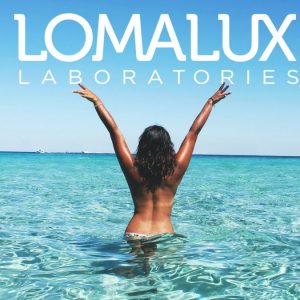How Do Sunscreens Protect Your Skin From Sunburn & Skin Cancer?
| 20May2019
Are Sunscreens Regulated by the FDA?
Yes, in the USA, the FDA has approved 16 active ingredients to be used in sunscreens via their OTC drug monographs. These ingredients can be either chemical or mineral filters. Most of the sunscreens on the market today use chemical filters to protect your skin. Mineral sunscreens physically block the sun’s rays from penetrating your skin via zinc oxide and or titanium dioxide. Instead of blocking rays, chemical sunscreens absorb and dissipate UV rays via a chemical process.

Protect Your Skin With These Important Updates About Sunscreens
How Is The SPF (sun protection factor) Tested?
The FDA has developed a regulation that a sunscreen manufacturer must test their product to determine its SPF value (i.e., SPF 30, SPF 50). Incredible as it may seem, the test is not very stringent. The test consists of 10 human volunteers who apply the sunscreen and then expose their skin to a high-intensity UV lamp. The next day, a lab investigator examines the skin for reddening. The SPF value is then determined by the number of UV rays that caused sunburn in the test volunteers.
UVA & UVB Rays – What Are They?
The sun shines on us via two types of rays – the long-wave ultraviolet rays are called UVA, the short wave ultraviolet waves are called UVB. The sun’s UVA rays penetrate deeper into your skin than UVB rays. Typically, sunscreens are better at shielding your skin from UVB rays than UVA rays. UVB rays are the ones that cause sunburn, while UVA rays cause tanning, skin damage, and aging. The more sunburn you get, the higher your risk to develop melanoma. Both UVA and UVB rays can cause melanoma. Most sunscreens are more effective in protecting your skin from UVB rays than UVA rays.
How Much Sunscreen Should I Apply?
The general rule is 1 oz. every two hours while out in the sun. Most people don’t apply enough sunscreen, so they don’t receive the true SPF protection factor that’s printed on the bottle. So a family of 4 people will use up an 8 oz. bottle if out in the sun for 4 hours. Make sure the expiration date is still valid so that you’ll receive maximum sun protection. The American Academy of Dermatology recommends that adults “apply about 1 ounce of a broad-spectrum, water-resistant sunscreen at least SPF 30 or higher every two hours outdoors”.
What Are My Risk Factors For Melanoma?
While melanoma rates have tripled since the 1970s, no one has been able to figure out why. The exact cause of melanoma is unknown, but risk factors include:
- Indoor Tanning
- Fair Skin/Freckles/Moles
- Severe Sunburns
- Family History
- UV Radiation From The Sun
So it’s important for you to take charge of the risk factors you can control. Using indoor tanning beds before age 30 will increase your risk of developing melanoma by 75%. Primarily, they emit UVA rays. The FDA issued a 2014 warning that tanning beds “can damage skin and shouldn’t be used by anyone under age 18”.
Men have higher melanoma rates than women. Melanoma is higher among whites than any other ethnic group.
The Latest Scare – Are Sunscreens Absorbed In The Blood?
A recent study published in the May 6, 2019 issue of the Journal of the American Medical Association indicated that four common chemical sunscreens were absorbed via the skin into the bloodstream. The study consisted of 24 persons who applied sunscreen to 75% of their body four times per day, for a total of four days. While these ingredients had a higher than 0.5 ng/mL absorption in the blood, further research is needed to ascertain the safety of these ingredients. The American Academy of Dermatology stated that “The sun is the real enemy here . . . It’s not news that things that you put on your skin are absorbed into the body. This study is the FDA’s way of showing sunscreen manufacturers they need to do the studies to see if chemical absorption poses health risks”.
One of the ingredients tested is Oxybenzone, a very common ingredient in USA sunscreen products. The European Union has already banned it from sunscreen products sold in the European Union. Hawaii has also banned it, as it harms the marine ecosystem by bleaching coral. Read the full AMA study here:
Is there any new legislation in the works to make sunscreens more safe & effective?
Yes, The FDA released a 2/21/2019 proposal “to bring up to date with the latest science to better ensure consumers have access to safe and effective preventative sun care options.” Several of their proposals include asking the industry for data to establish that active ingredients are GRASE (generally recognized as safe and effective). Currently, only two ingredients zinc oxide and titanium dioxide (both mineral sunscreens) are GRASE. Also, the FDA recommends that the maximum SPF value is raised from SPF 50+ to SPF 60+, that sunscreens also provide broad-spectrum protection, and have better labeling requirements, among others. Read the full report here https://www.fda.gov/news-events/press-announcements/fda-advances-new-proposed-regulation-make-sure-sunscreens-are-safe-and-effective
Sun Safety – What Can I Do To Protect Me?
Most experts suggest that to reduce the risk of melanoma, avoid sunburn and limit sun exposure. In addition to the liberal use of sunscreen, protective clothing, hats, and sunglasses will help protect your skin while out in the sun. Try outdoor activities during less sun-intense times of the day and seek out shade. See a doctor for a skin cancer check and also practice monthly skin cancer self-examinations. Most skin cancers are easy to cure if diagnosed and treated early, so please be sure to make self-examinations a regular part of your skincare routine.
